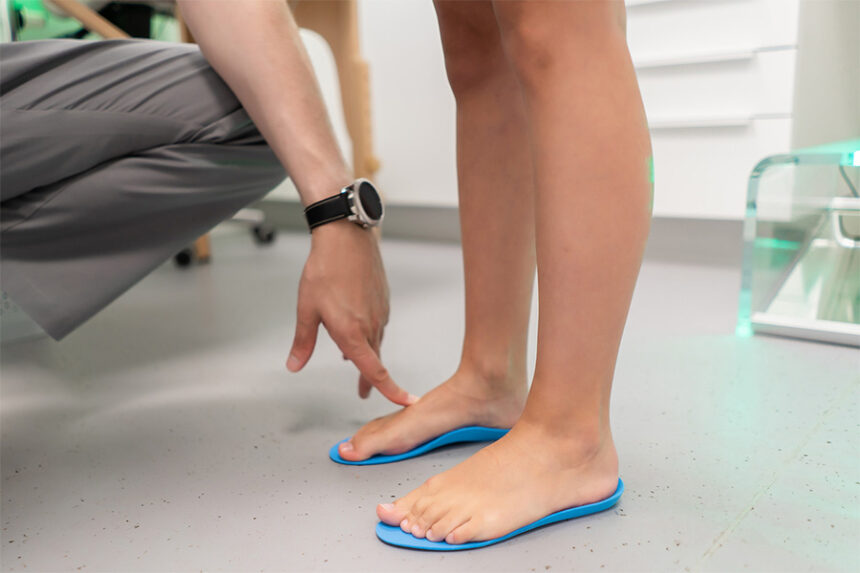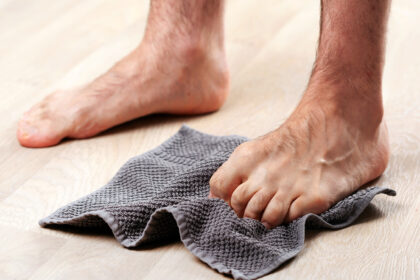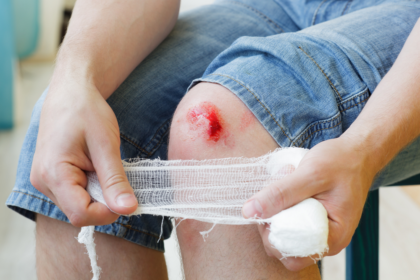Custom orthotics are medical devices that you wear inside shoes. They are made from a precise mold of your feet to match your unique foot structure. Unlike over-the-counter shoe inserts, custom orthotics are built specifically for your individual needs. They come in various materials and styles, each customized to address different foot-related issues. Here’s how they work with specific foot types, such as flat feet or high arches:
Flat Feet
Flat feet occur when the arches of the feet are absent or very low. When a person with flat feet stands, they may position their entire sole in nearly complete contact with the ground. This condition may be present from childhood due to improper arch development or may develop later in life.
Some individuals with flat feet do not experience discomfort or related problems, but others may feel pain in their feet, ankles, or lower legs. The condition can also affect leg alignment, leading to discomfort in the knees or hips. Custom orthotics for flat feet are created to support the arch area. These orthotics conform to the contours of the foot, helping to distribute pressure more evenly across the sole during standing and walking.
High Arches
High arches are the opposite of flat feet. In this condition, the arch of the foot raises more than normal. The foot rests on the heel and the ball of the foot, with the arch elevated from the ground. High arches may also be inherited.
This foot structure can cause a variety of issues. An excessive amount of weight is placed on the heel and the ball of the foot. This uneven weight distribution can lead to pain, instability, and other conditions. Professionals design custom orthotics for high arches to increase the surface area of the foot that contacts the shoe, providing a more stable fit. By supporting the arch, orthotics help to redistribute pressure away from the heel and the ball of the foot, which may offer more stability and cushioning.
Rigid or Soft Orthotics
Professionals categorize custom orthotics as either rigid, soft, or semi-rigid. The type prescribed depends on your specific needs and treatment goals. Their uses are as follows:
- Rigid Orthotics: Typically made from firm materials such as carbon fiber or plastic, these orthotics control motion in the two major foot joints located directly below the ankle joint. They are used in walking or dress shoes and are built to last.
- Soft Orthotics: Made from soft, cushioned materials, these orthotics absorb shock, improve balance, and alleviate pressure on uncomfortable or sore spots. Soft orthotics serve as a suitable choice for individuals with diabetes, arthritis, or other foot issues.
A semi-rigid orthotic combines features of both rigid and soft types. It uses layers of soft material reinforced with more rigid materials to provide support and cushioning.
Try Custom Orthotics Today
Choosing the right type of foot support requires you to understand your unique foot structure and any associated foot discomfort. Flat feet and high arches each present specific challenges that influence your body’s movement. Custom orthotics provide personalized support tailored precisely to the shape of your feet. If you experience foot discomfort and want to explore personalized solutions, take the next step by scheduling a consultation. During the appointment, you can learn how custom orthotics are made and determine if they suit your needs.









